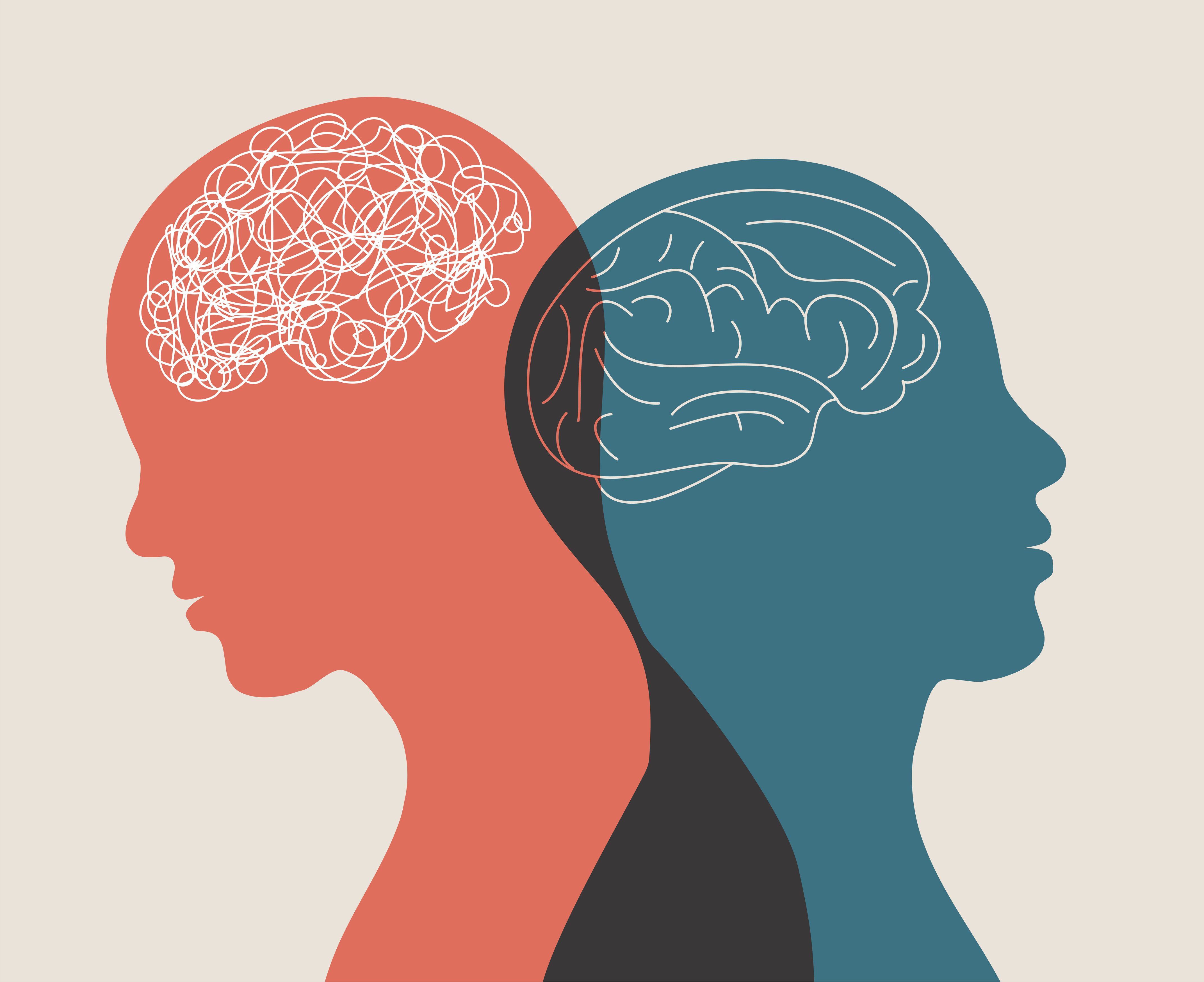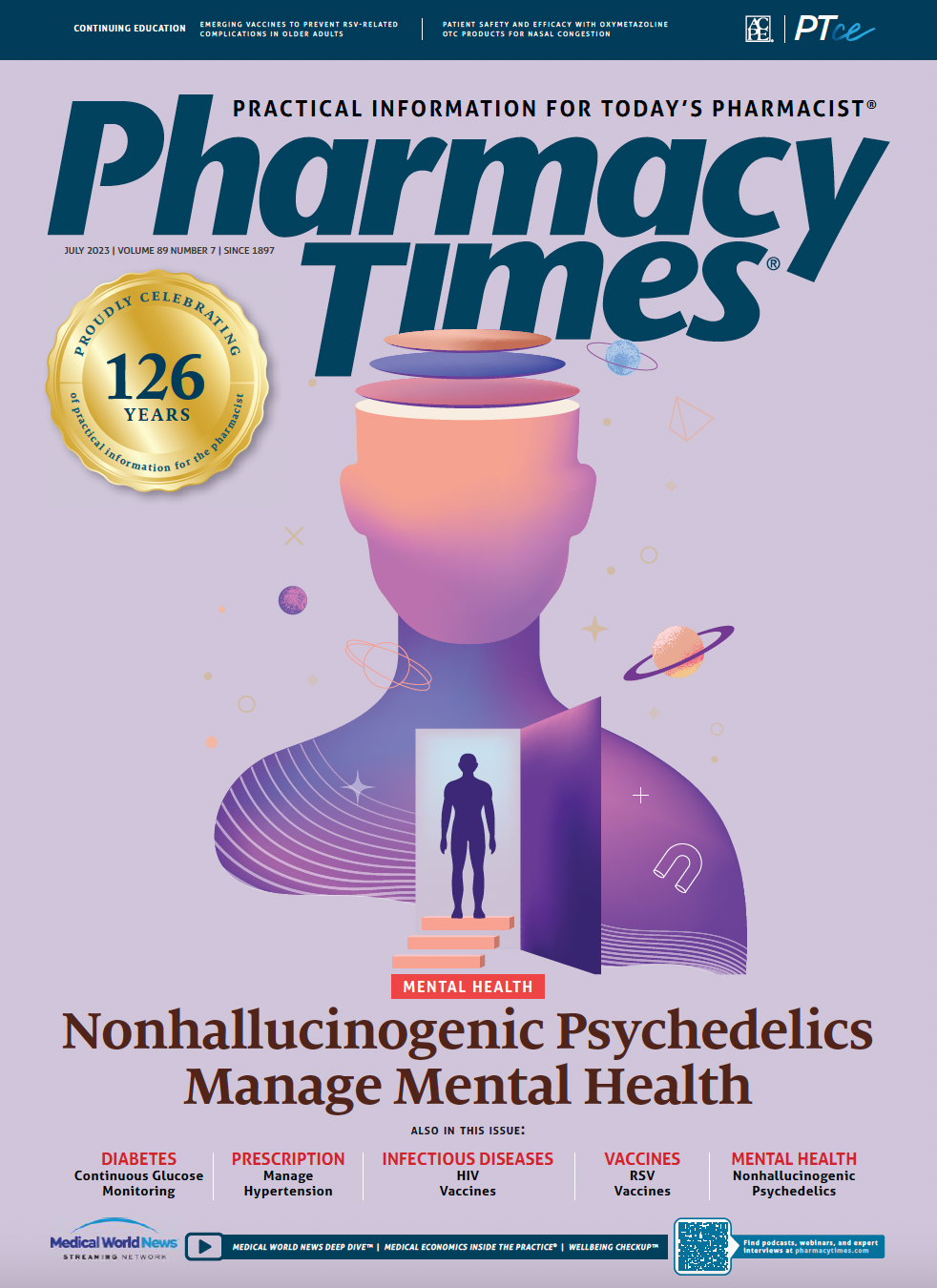News
Article
Pharmacy Times
Nonhallucinogenic Psychedelics Can Help Manage Mental Health
Author(s):
Further research and regulatory changes are needed, but psychedelic medicines may be able to treat or even cure mental illness in the future.
Psychedelic medicines are signaling a potential shift in the approach to treating mental health, with opportunities to not only treat, but to even cure complex mental illnesses such as depression and posttraumatic stress disorder.
Image credit: Melita - stock.adobe.com

Mental illnesses are among the most common health conditions in the United States.1 Notably, more than 1 in 5 adults in the US live with a mental illness, and more than 1 in 5 youth (aged 13 to 18 years) either currently or previously had a seriously debilitating mental illness.1 Furthermore, approximately 1 in every 25 adults in the United States has a serious mental illness such as schizophrenia, bipolar disorder, or major depression.1 Mental health includes emotional, psychological, and social well-being. It affects how individuals think, feel, and act, in addition to determining how they handle stress, relate to others, and make healthy choices. Mental health is important at every stage of life, from childhood and adolescence through adulthood.It is important to remember that mental health changes over time. When the demands placed on an individual exceed their resources and coping abilities, their mental health can be impacted. For example, if an individual is working long hours, caring for a relative, or experiencing economic hardship, they may experience a decline in their mental health.
PSYCHEDELIC MEDICINES
Psychedelic drugs are powerful psychoactive substances that alter perception and mood. They can affect numerous cognitive processes. Generally considered physiologically safe, they do not lead to dependence or addiction, and they were employed by early cultures in many sociocultural and ritual contexts.2 The use of psychedelic drugs in psychiatry is exciting because they seem to produce rapid and sustained therapeutic effects across several complex and difficult to manage psychiatric disorders, including depression, anxiety, posttraumatic stress disorder, and substance use disorder, in addition to end-of-life care.2 Psychedelic drugs such as lysergic acid diethylamide (LSD) and mushroom-derived psilocybin bind to serotonin 2A receptors (5-HT2AR).3 Multiple studies have shown significant efficacy, such as a 2021 study published in the New England Journal of Medicine, which found that patients with moderate to severe major depressive disorder who received 2 doses of psilocybin had just as strong results—or even stronger results—than patients who received daily dosages. of escitalopram.4 Similarly, a 2021 study published in JAMA Psychiatry found that psilocybin-assisted therapy produced large, rapid, and sustained antidepressant effects in patients with major depressive disorder.5 This binding to 5-HT2AR has significant, well-established antidepressant effects. However, despite these data, the hallucinatory effects of these drugs complicate more wide-spread use as therapeutics.3
NONHALLUCINOGENIC PSYCHEDELICS
Safety concerns and toxicity have limited psychedelics’ therapeutic use. However, identifying the key structural elements of a potentially therapeutic compound has allowed for the manipulation of the molecule in such a way to produce an analog with more beneficial properties and fewer negative effects.3 Recent study results have shown that, through careful chemical design, it is possible to modify a psychedelic drug to produce a safer, nonhallucinogenic analog with therapeutic potential.6 Researchers have demonstrated this using a nonhallucinogenic analog of LSD called 2-bromo-LSD (2-Br-LSD) for depression. They found that LSD is nearly a full agonist at both the 5-HT2A and 5-HT2B subtypes, whereas 2-Br-LSD is a partial agonist at 5-HT2A and a potent antagonist at 5-HT2B. In addition, LSD interacts with a wide range of other aminergic G protein–coupled receptors, resulting in adverse effects, whereas 2-Br-LSD has fewer off-target activities.6 Another analog of LSD is lisuride (Dopergin). This drug is a dopamine agonist and a partial agonist of 5-HT2A. This is used as an anti-Parkinson agent and may be repurposed for use in Dravet syndrome.
PSYCHOPLASTOGENS
Many nonhallucinogenic psychedelics fall under a relatively new class of fast-acting therapeutics called psychoplastogens, which are capable of rapidly promoting structural and functional neural plasticity.2 Neural plasticity refers to the ability to change and adapt in response to stimuli, and it is an important part of healthy brain function. Nonhallucinogenic psychedelics are specifically designed to maximize the effects of this ability present in psychedelics. Therapeutically, these analogs could be used to promote recovery from many neuropsychiatric disorders, including mood disorders, anxiety, and substance use disorder.2 One example is the analog tabernanthalog, which is derived from ibogaine. It has demonstrated effectiveness in treating substance use disorder and depression. Investigators have also studied the effect of tabernanthalog on unpredictable mild stress in mice. Not only did 1 dose of tabernanthalog reduce the anxiety produced by unpredictable mild stress, but it also restored the neuronal deficits resulting from the stress.2
THE FUTURE
Clinical trials will be required to determine whether psychoplastogenic analogs of psychedelics can produce therapeutic effects in humans without inducing hallucinations and other toxicities associated with traditional psychedelics. Other experiments can be done to determine the roles of subjective effects and enhanced neural plasticity in the therapeutic properties of psychedelics. Some of this research is already occurring, as seen in the recent FDA approval of 3,4- methylenedioxymethamphetamine for clinical trial use investigating schizophrenia.8 In this study, to be conducted at UCLA, investigators plan to assess the use of the drug to treat impaired social motivation, which can cause significant functional impairment in individuals with schizophrenia and currently has no effective treatment.8 Despite promising therapeutic responses to psychedelic-assisted therapy, the hallucinogenic effects of these drugs make it unlikely that these will be widely used therapeutically. On the other hand, analogs without hallucinogenic effects used to rewire pathological neural circuitry hold enormous potential as first-line treatments for patients with a variety of neuropsychiatric disorders.
PHARMACISTS’ ROLE
Pharmacists have a significant role in supporting individuals with mental illness. However, more work is needed to demonstrate the clinical outcomes and cost-effectiveness of these roles, thereby allowing pharmacists to become a more integrated part of the mental health care teams across various practice settings.
In addition, all pharmacists should have standardized, mandatory mental health and crisis first aid training to ensure they are able to confidently and appropriately care for patients with mental illnesses who are experiencing crises.
About the Author
Kathleen Kenny, PharmD, RPh, has more than 25 years of experience as a community pharmacist. She is a clinical medical writer based out of Homosassa, Florida.
References
- About mental health. CDC. Updated April 25, 2023. Accessed June 12, 2023. https://www.cdc.gov/mentalhealth/learn/index.htm.
- Vargas MV, Meyer R, Avanes AA, Rus M, Olson DE. Psychedelics and other psychoplastogens for treating mental illness. Front Psychiatry. 2021;12:727117. doi:10.3389/fpsyt.2021.727117
- Cao D, Yu J, Wang H, et al. Structure-based discovery of nonhallucinogenic psychedelic analogs. Science. 2022;375(6579):403-411. doi:10.1126/science.abl8615
- Carhart-Harris R, Giribaldi B, Watts R, et al. Trial of psilocybin versus escit-alopram for depression. N Engl J Med. 2021;384(15):1402-1411. doi:10.1056/NEJMoa2032994
- Davis AK, Barrett FS, May DG, et al. Effects of psilocybin-assisted therapy on major depressive disorder. JAMA Psychiatry. 2021;78(5):1-9. doi:10.1001/jamapsychiatry.2020.3285
- Lewis V, Bonniwell EM, Lanham JK. A non-hallucinogenic LSD analog with therapeutic potential for mood disorders. Cell Rep. 2023;42(3):112203. doi:10.1016/j.celrep.2023.112203
- Sourbron J, Partoens M, Scheldeman C, Zhang Y, Lagae L, de Witte P. Drug repurposing for Dravet syndrome in scn1Lab-/- mutant zebrafish. Epilepsia. 2019;60(2):e8-e13. doi:10.1111/epi.14647
- Hippensteele A. FDA approves MDMA for clinical trial use investigating schizophrenia. Pharmacy Times. June 9, 2023. Accessed June 16, 2023. https://www.pharmacytimes.com/view/fda-approves-mdma-for-clinical-trial-use-investigating-schizophrenia

Newsletter
Stay informed on drug updates, treatment guidelines, and pharmacy practice trends—subscribe to Pharmacy Times for weekly clinical insights.





